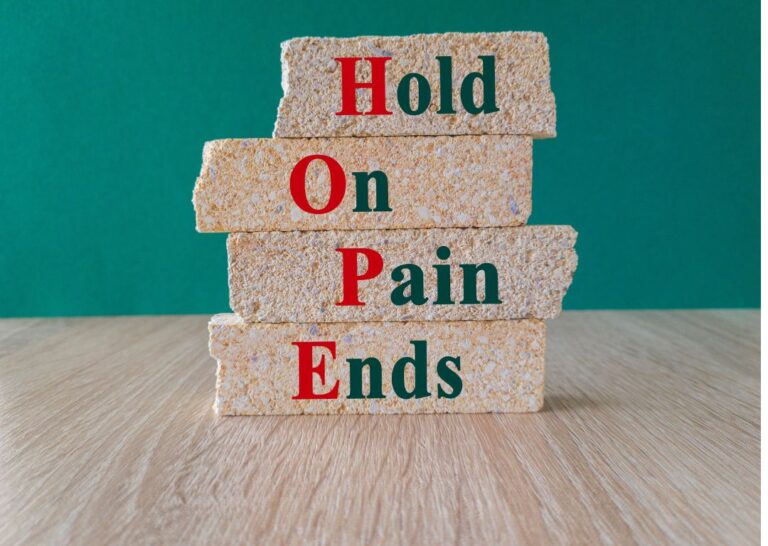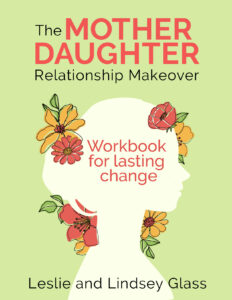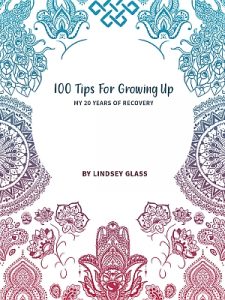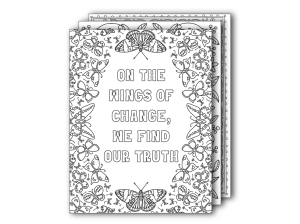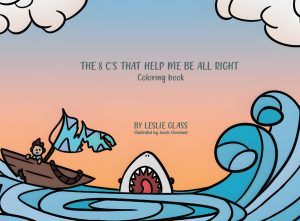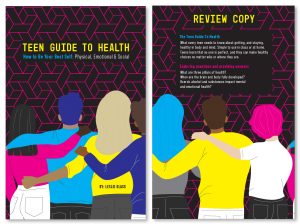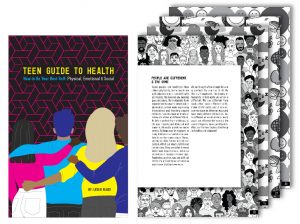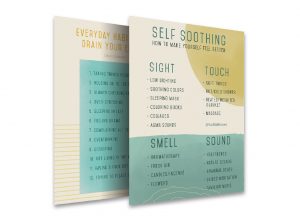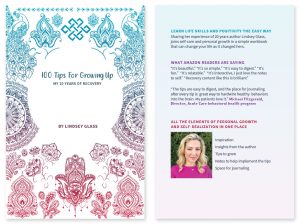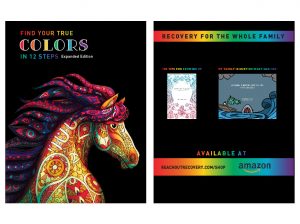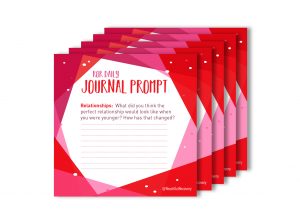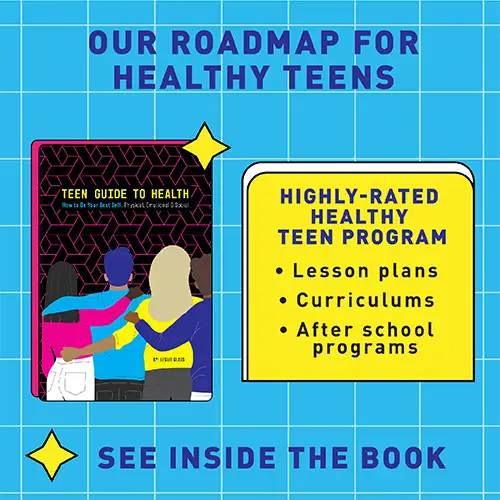Let’s Start With Hopeless Isn’t Helpless
I’ve been hopeless many times around many things, so I’m qualified for this one. Someone wrote to us from our newsletter and asked for some advice. They feel hopeless about a painful and tragic family situation and wanted some thoughts on how to feel better. Let’s start with it’s normal and okay to feel this way, especially in the circumstances you’re dealing with, and you are not broken or bad for being tired of trying.
Hopelessness is a actually signal — not a sentence. Feelings are information, not identity. You are more than this moment.
Doable Things Right Now To Manage Hopeless (the next 5 minutes)
These are tiny, grounding acts that actually change your brain chemistry a little — enough to shift the edge off the panic and feeling hopeless:
-
Breath reset (60 seconds): Inhale 4 seconds — hold 4 — exhale 6–8. Repeat 6 times. (No pressure, just breath.)
-
Name five: Look around and name five things you can see, four you can touch, three you can hear, two you can smell, one thing you can taste. It pulls your brain out of the storm.
-
Say one true thing: Out loud or in your head: “I am here. I am breathing. I can take one small step.” Short, simple facts anchor you.
-
Reach out: Send one short message to one safe person: “I’m struggling. Can we talk for 10 minutes?” If that feels impossible, text a crisis line (988 in the U.S. also supports texting).
Hopeless Day Plan (Next few hours)
-
Create a five-item safety plan on your phone: who you’ll call, what calms you, a reason to stay (small is fine), places that feel safe, steps to remove immediate danger.
-
Move your body for five to ten minutes — a walk, stretching, or shaking your arms. Movement signals to the body that we’re not trapped.
-
Limit big decisions. If you’re overwhelmed, postpone major choices for 24–72 hours until you’ve stabilized.
-
Use a tiny distraction ritual (tea, a TV show you like, a short guided meditation) — distraction isn’t avoidance here; it’s survival.
Hopeless Plan Moving Forward (What to do in the next few days)
-
Build a support step: book one appointment — with a therapist, doctor, or even a coaching call. If therapy is not available, look for peer support groups or community hotlines.
-
Journal one safe question: “What would make tomorrow feel 1% better?” Answer in one sentence and do it. Small increases stack.
-
Sleep and food basics: aim for regular meals and a consistent sleep window. When hopelessness hits, these basics often get lost, and they matter more than you think.
-
Limit social media and anything that amplifies the noise. Replace 30 minutes of doom scrolling with 10 minutes of something that soothes you (music, an old photo album, a podcast).
What To Think — Quick Cognitive Tools
-
Feelings are loud but not always right. Ask yourself: “What would I tell my best friend if they felt this way?” Try saying that to yourself. Remember over and over that hopeless isn’t helpless.
-
Test the worst-case thought: “If the thing I fear happens, how would I cope? What evidence says that might not happen?” This isn’t about pollyanna optimism — it’s about curiosity and gathering facts.
-
Reframe small: instead of “I’ll never feel better,” try “I feel terrible now, and I can try one small thing that might help.”
What To Feel — Permission And Practice
-
Give yourself permission to feel anger, grief, numbness, relief — whatever shows up. Emotions are messy and valid.
-
Practice self-compassion: imagine what a kind friend would say to you and let that be your inner voice for 2 minutes. It’s short practice, but it rewires the tone you use with yourself.
Scripts For Reaching Out
To a friend: “I’m having a really hard time and could use someone to listen for 10 minutes. Can you be with me?”
To a partner/family: “I need help — I don’t want to panic alone. Can you sit with me or help me call someone?”
To a therapist: “I’m feeling hopeless this week and need support.”
Long-Term Steps That Actually Help You Move Away From Hopeless
-
Therapy (CBT, trauma-informed therapists, EMDR for some) can teach skills to manage hopelessness.
-
Medication can be life-saving for some people; consult a psychiatrist or your primary care doctor if symptoms are severe.
-
Community matters: find groups, faith communities, support groups, or classes that give connection and purpose.
-
Small consistent rituals (sleep, movement, journaling, one uplifting hour a week) build momentum over months.
If this comes from family pain — mother/daughter or similar
If your hopelessness is connected to a painful family relationship, know this: the work of healing is allowed to take time. You do not have to forgive before you heal. You are allowed to set limits. If you want tools for that, there are guided exercises and prompts that help you map the pain and the steps forward — quietly, clearly, without shame.
If you’re in immediate danger or thinking about harming yourself
Stop reading this right now and call for help: In the U.S., dial 988 for the Suicide & Crisis Lifeline. If you’re outside the U.S., call your local emergency number or find your country’s crisis line (search “suicide crisis line + your country”). If you’re with someone, tell them: “I need help right now.” If you’re alone, text or call a trusted person and say you don’t feel safe.
Hopeless Reminder
No one expects you to be brave alone. Hope rarely bolts back in like a superhero; it returns slowly, in small increments. Today, your job is not to fix everything. Your job is to put one small, kind action between you and the dark.
If you want, I’ll stay here on comments. If you’re comfortable, DM me the word “struggling” and I’ll send a short list of grounding tools and a safe starting worksheet you can use tonight. If not me, please tell someone who loves you — even a short message helps.
You matter. Your life matters. Take the next small step. I’ll meet you there.
Check Out My New Workbook!
Who Is The Mother-Daughter Relationship Makeover Workbook For Lasting Change For?
Everyone who wants to understand and improve relationships with family. This workbook is for mothers and daughters of all ages and stages. Maybe you’re a mother who longs to reconnect with your adult daughter, or doesn’t understand what went wrong with her. Maybe you’re a daughter who desperately needs to let go of old resentments and hurts. Maybe you’re somewhere in between, just knowing there must be a better way.
It’s also for anyone who:
-
Feels stuck in repetitive conflict
-
Wants to create healthier boundaries
-
Craves more closeness but doesn’t know how to get there
-
Is healing from a dysfunctional or toxic family system and needs tools for recovery
If you’ve ever wanted more love, more peace, more understanding in your most important relationship, this book was made for you.
Why It Matters Now
Healing doesn’t just impact you and your mother (or daughter). It ripples outward. The way we show up in this relationship influences how we connect in every area of our lives—with our children, partners, friends, even colleagues. Breaking the cycle of hurt here means creating a new legacy of healthier love.
This workbook gives you the structure and courage to begin that process—and to keep going until lasting change is real.
A Loving Invitation
If you’re ready to stop replaying the same painful dynamics, if you’re ready to learn new tools and write a new story for yourself and your family, The Mother-Daughter Relationship Makeover Workbook For Lasting Change is your guide.
Healing isn’t easy—but it is possible. With reflection, practice, and support, you can build a relationship rooted in respect, compassion, and genuine love. This workbook is here to help you get there.
Because every mother and daughter deserves a chance to heal. And so do you.
CHECK OUT THE FIRST BOOK
Follow us onInstagram
Like us on Facebook
Comment on our posts

